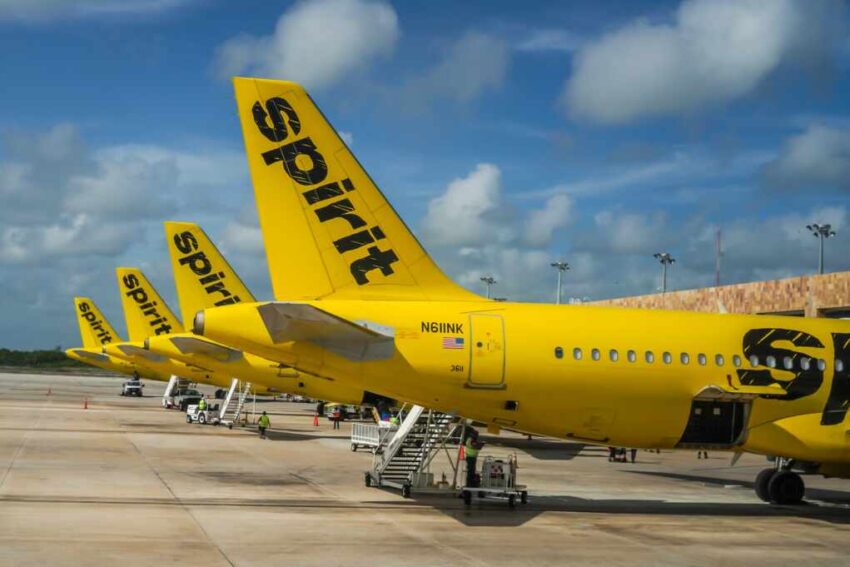Spirit Airlines just made history as the first major U.S. carrier in over a decade to fly out of bankruptcy—only to slam on the brakes and furlough 270 pilots while demoting 140 captains, leaving everyone wondering: is this the bumpy landing before a total nosedive or just turbulence on the way to clearer skies?
At a Glance
- Spirit Airlines exited Chapter 11 bankruptcy in March 2025 but is now furloughing 270 pilots and demoting 140 captains.
- These drastic labor cuts come after years of mounting losses and a failed merger with JetBlue.
- The airline’s survival plan depends on severe cost-cutting, but the long-term impact on its workforce and future growth remains uncertain.
- Industry insiders view Spirit’s moves as a bellwether for other ultra-low-cost carriers navigating post-pandemic upheaval.
The Bankruptcy Bounce: From Courtroom to Cockpit Chaos
Spirit Airlines strutted out of bankruptcy court in March 2025, waving its new equity like a victory banner. Just months later, the airline’s management pressed the ejector seat on 270 pilots and clipped the wings of 140 captains, sending them back to first officer status. This isn’t a typical cost-cutting trim—it’s a full-on haircut, and it’s happening after a high-profile bankruptcy exit that was supposed to mark a fresh start. For the 40+ crowd who remember American Airlines’ bankruptcy saga, Spirit’s whiplash pivot from “recovered” to “retrenched” triggers a sense of déjà vu—except this time, it’s the bold yellow planes grounded by financial gravity, not legacy carriers fumbling through deregulation.
Spirit Airlines is furloughing 270 pilots effective 11/1 due to reduced flight schedule. Airline says it’s downgrading approx 140 captains effective 10/1. Statement
pic.twitter.com/gzKxmVYPSL
— Kris Van Cleave (@krisvancleave) July 28, 2025
The drama began in 2024, when Spirit, battered by pandemic hangover, rising fuel costs, and cutthroat fare wars, lost over $1.2 billion. The failed JetBlue merger was the knockout punch, sending Spirit to Chapter 11 in November. After a brisk, bondholder-driven restructuring, Spirit emerged with new owners, a new capital stack, and the same old existential headaches: too much debt, not enough paying passengers, and aircraft idling on the tarmac. The stage was set for a comeback, but the script called for mass layoffs instead of a Hollywood ending.
Why Pilots Got the Short End of the Yoke
Spirit’s ultra-low-cost business model relies on packing planes full and flying them nonstop. But with demand sagging and aircraft utilization down more than 10% in 2024, the math no longer worked. Management, led by CEO Ted Christie and a board full of hedge fund heavyweights, made the call: fewer flights mean fewer pilots, and the costliest captains are first on the chopping block. The irony is bitter—Spirit’s captains, once at the controls of the industry’s fastest-growing fleet, are now being asked to step back in rank, while hundreds face the prospect of unemployment. For pilots, seniority and pay are everything; the demotions are a gut punch, and the furloughs a career detour that could last months, years, or forever.
Labor unions, sensing a fight, have condemned the moves, warning of morale collapse and the loss of experienced talent. But the new shareholders—think Citadel, Pimco, and other Wall Street titans—want returns, not sentiment. For them, every unfilled seat is a cost center, and every pilot paycheck is a line item to be slashed. The power struggle between labor and capital is on full display, with pilots’ livelihoods caught in the crosswind.
The Ripple Effects: Passengers, Competitors, and the Fate of Cheap Flights
The pain isn’t confined to Spirit’s payroll. Passengers in smaller cities or those hooked on Spirit’s rock-bottom fares may soon find fewer flights—or none at all. Operational hiccups are likely as crews shuffle and schedules shrink. Competing airlines, especially other low-cost carriers like Frontier, smell opportunity: Spirit’s retrenchment could yield valuable gates, routes, and customers up for grabs. Meanwhile, regional economies and airport workers who depend on frequent Spirit service brace for a slowdown.
Industry analysts see this as a warning shot for all ultra-low-cost carriers. The formula that made Spirit famous—super-low fares, relentless upselling, and high plane utilization—now looks fragile in a market beset by volatility. Labor experts warn that if pilots see the writing on the wall and exit the industry, the next demand rebound could find airlines scrambling for qualified crews. Regulators may watch closely if service cuts leave cities underserved, raising political headaches that go beyond balance sheets.
Is This the End of the Line or Just a Reset?
Spirit’s management insists the company is merely right-sizing to survive. They argue that, painful as these cuts are, they’re necessary to weather the storm and avoid a total collapse. Skeptics counter that the post-bankruptcy plan was too optimistic, failing to address deeper flaws in Spirit’s business model. The truth may lie somewhere in between: Spirit’s fate will hinge on its ability to adapt, shed costs, and—if luck holds—ride out the downturn until the skies clear.
For now, the story ends with hundreds of pilots grounded, a workforce on edge, and a once swaggering airline navigating uncharted turbulence. Whether Spirit’s downsizing is the final descent or a maneuver for future takeoff, only time—and the next earnings call—will tell.
Click this link for the original source of this article.
Author: Editor
This content is courtesy of, and owned and copyrighted by, https://conservativeamericatoday.com and its author. This content is made available by use of the public RSS feed offered by the host site and is used for educational purposes only. If you are the author or represent the host site and would like this content removed now and in the future, please contact USSANews.com using the email address in the Contact page found in the website menu.





